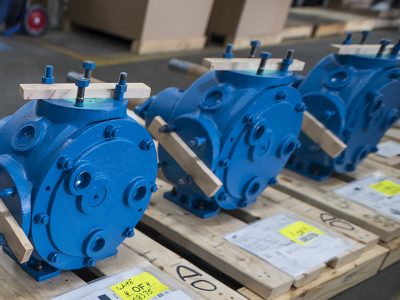
Two common descriptions of pump pressure are PSI (pounds per square inch) and TDH (total dynamic head). PSI is usually associated with positive displacement pumps and TDH with centrifugal pumps, but the terms are interchangeable.
PSI is usually stated in gauge pressure as PSIG, the pressure you read on a pressure gauge. Negative pressure is usually stated in inches of mercury vacuum, HgV. These are common values used in America, but pressure can be translated into metric and other terms.
Differential pressure (ΔP or delta P or DP) is the difference in pressure across the pump. Differential pressure is used for pump and motor selection as it is the actual pressure the pump sees. DP is the pressure on the suction side of the pump plus the pressure on the discharge side of the pump in relation to the desired discharge pressure. If 50PSI is the desired discharge pressure and you have +10PSI on the suction side, the pump needs to develop 40PSI for the total discharge pressure to equal 50PSI (+10+40). Likewise, if the suction pressure was negative -5PSI (~10”HgV) such as a suction lift application where the liquid level is below the pump, the pump would have to develop 55PSI (-5+55) to achieve the total discharge pressure of 50PSI.
PSIA is pressure per square inch absolute. This takes into account atmospheric pressure. 0PSIG is equal to 14.7PSIA at sea level or 33.9’ of water column (atmospheric pressure decreases with altitude, for example: 14.2PSIA at 1000 ft. elevation).
TDH or total dynamic head is another common term for describing pressure across a pump. Every 2.31’ of vertical level = 1 PSI for water and liquids with a specific gravity of 1 (or 8.34 pounds per gallon). For liquids heavier than water, the pressure exerted is greater for the same vertical level. For example; a tank with 23.1’ of water level would read 10PSI on a pressure gauge at the bottom of the tank [(23.1ft./2.31ft/psi)X1SG=10psi].
With a liquid with a specific gravity of 1.2 (10 pounds per gallon) at the same 23.1 foot level, the pressure gauge would read 12PSI [(23.1ft./2.31ft/psi)X1.2SG=12psi].
And a pressure gauge would read less for liquids lighter than water.


